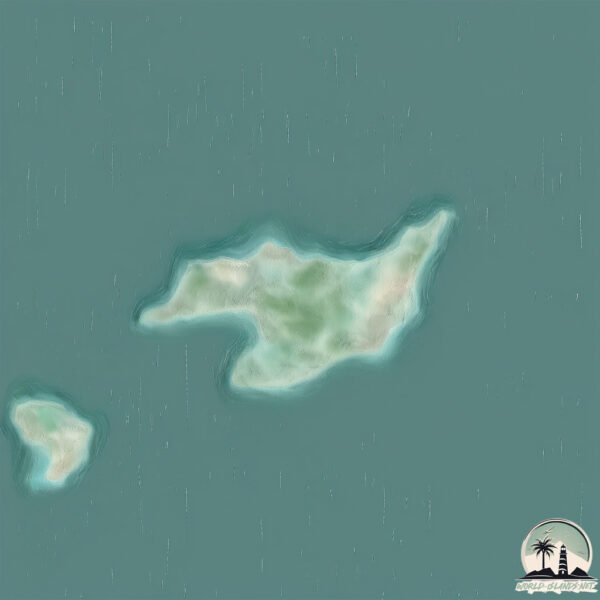Welcome to North Tyssen , a Temperate island in the South Atlantic Ocean, part of the majestic Atlantic Ocean. This guide offers a comprehensive overview of what makes North Tyssen unique – from its geography and climate to its population, infrastructure, and beyond. Dive into the details:
Geography and size of North Tyssen
Size: 2.682 km²Coastline: 9.4 kmOcean: Atlantic OceanSea: South Atlantic OceanContinent: South America
North Tyssen is a Small Island spanning 2.7 km² with a coastline of 9.4 km.
Archipel: Falkland Islands – Located in the South Atlantic Ocean, this British Overseas Territory is known for its rugged terrain, biodiversity, and historical significance.
Tectonic Plate: South America – A major plate covering the South American continent and part of the Atlantic Ocean, known for the Andes mountain range and significant seismic and volcanic activity.
The geographic heart of the island is pinpointed at these coordinates:
Climate and weather of North Tyssen
Climate Zone: TemperateClimate Details: Subpolar Oceanic ClimateTemperature: Cold Summer
Climate Characteristics: Predominantly cold with cool summers and no dry season. Often found in coastal areas at higher latitudes or on islands.
Topography and nature of North Tyssen
Timezone: UTC-04:00Timezone places: America/La_PazMax. Elevation: 12 m Mean Elevation: 6 mVegetation: ShrublandTree Coverage: 50%
The mean elevation is 6 m. The highest elevation on the island reaches approximately 12 meters above sea level. The island is characterized by Plains: Flat, low-lying lands characterized by a maximum elevation of up to 200 meters. On islands, plains are typically coastal lowlands or central flat areas.
Dominating Vegetation: Shrubland
Vegetation: 5 vegetation zones – Highly Diverse Island
Infrastructure and Travelling to North Tyssen
Does the island have a public airport? no .
Does the island have a major port? no .
The mean population of North Tyssen is 0 per km². North Tyssen is Uninhabited. The island belongs to Falkland Is. .
Continuing your journey, Swan is the next notable island, situated merely km away.
RF4 " VILLA TYSSEN " - 7 bedrooms, Cap Martinet, IBIZA Real Estate
http://www.romanfortunato.com Description: At a secluded location just 5 minutes from Ibiza town you'll find one of the most exclusive ...
RF4 " VILLA TYSSEN " - 7 bedrooms, Cap Martinet, IBIZA Real Estate
Greenland - The Largest Island in the World
Fjords, glaciers and the highest mountains in the Arctic: East ...
Fjords, glaciers and the highest mountains in the Arctic: East Greenland with its spectacular nature is one of the most sparsely ...
Mudlarking Under an ANCIENT Castle! With @Sifinds
Last summer we partnered up with Thames mudlark Simon Bourne of ...
Last summer we partnered up with Thames mudlark Simon Bourne of Si-Finds for a treasure hunt below the walls of the ancient ...
Falkland Is. is classified as Developed region: G7: Group of Seven – Major advanced economies, including Canada, France, Germany, Italy, Japan, the United Kingdom, and the United States. The level of income is High income: OECD.
News – Latest Updates and Headlines from North Tyssen
Stay informed with the most recent news and important headlines from North Tyssen. Here’s a roundup of the latest developments.
Loading...
Please note: The data used here has been primarily extracted from satellite readings. Deviations from exact values may occur, particularly regarding the height of elevations and population density. Land area and coastline measurements refer to average values at mean high tide.

